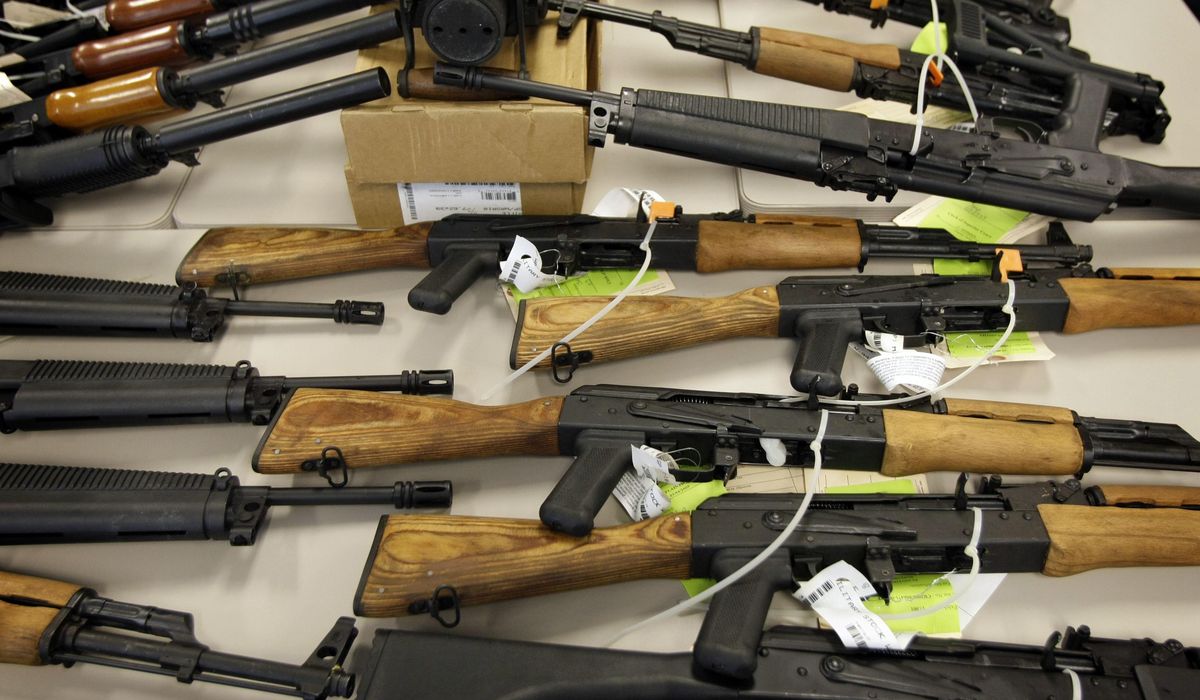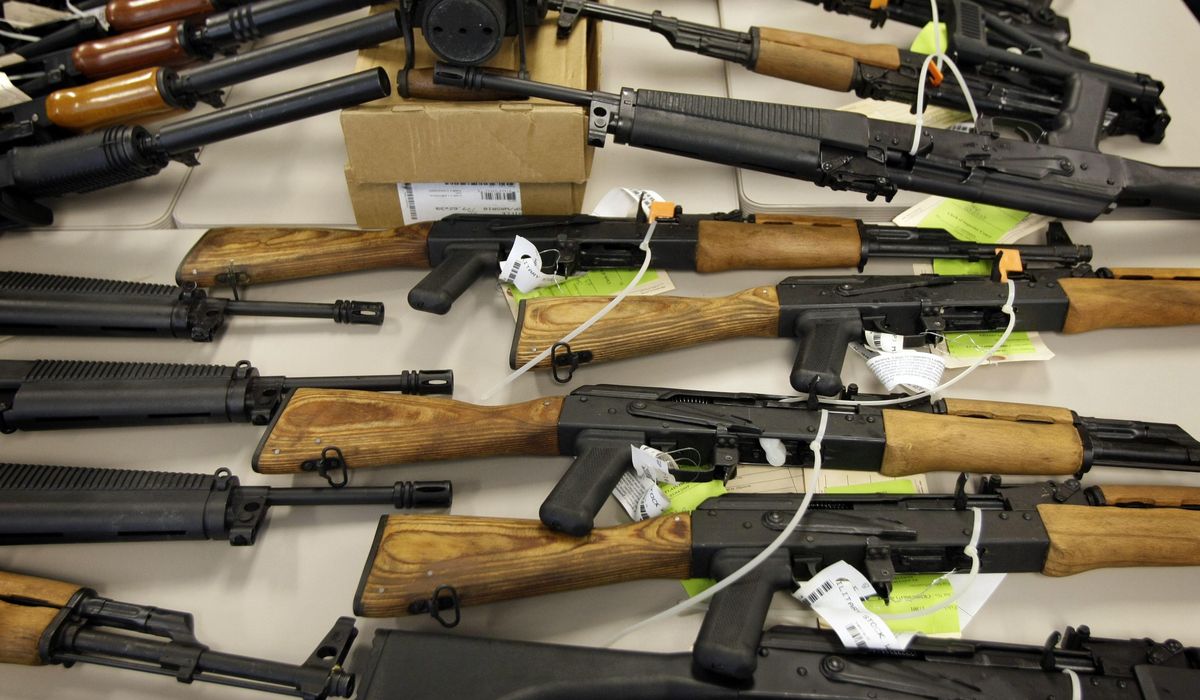
Thousands of firearms manufactured or bought in the U.S. end up being used in crimes in Central America, according to a new audit released last week that found about half of them are illegally smuggled into the region, but the others are legally exported and then “diverted” into criminals’ hands.
Florida, Texas and California were the most frequent source of U.S.-purchased weapons that ended up in Belize, El Salvador, Guatemala and Honduras, according to the Government Accountability Office, Congress’ chief watchdog.
GAO investigators examined 27,240 requests those countries submitted to the Bureau of Alcohol, Tobacco, Firearms and Explosives for tracing between 2015 to 2019.
ATF found about 40% of the weapons were manufactured in the U.S., and the rest came from 39 other countries, the GAO said. But a much smaller fraction were actually traced to a U.S. purchase.
Most were handguns, but there were some rifles and a small number of machine guns — about 1.7% of the total.
Pistols are the pick of street gangs like MS-13 and 18th Street, which carry out murder and extortion in urban areas in those countries. Rifles were more popular with drug traffickers, who use AR-15 or AK-47-style weapons to protect drug shipments, GAO said.
A number of America’s neighbors say the U.S. is the source of many of the illegal firearms they find in their country, but it’s the Central American nations who are a particular focus right now, with Vice President Kamala Harris trying to figure ways to stem the surge of illegal immigrants coming from that area.
Even as the migrants are coming north, the administration says U.S.-sourced weapons are streaming south to fuel violence — which in turn sends more people fleeing north.
GAO investigators said, despite Ms. Harris’ focus, government agencies don’t prioritize disrupting U.S. guns from reaching the region.
“In the course of our review, we found that information that could assist State with planning and implementing firearms-focused projects in the four countries is available from other U.S. agencies and from partner governments,” investigators said. “State officials told us they had not yet obtained this information because they had not focused on firearms trafficking in these countries.”
The State Department does, however, pump money into the four countries to clean up after the mess. Between 2015 and 2019, American taxpayers shipped $3 million to the countries to help them destroy weapons stockpiles.
With that money, Guatemala destroyed nearly 2,500 firearms, and El Salvador wrecked about 2,000 more.
With the vice president’s prodding, the State Department is preparing to do more. The Bureau of Western Hemisphere Affairs is planning to “elevate” gun trafficking as a new “focus.”
But the department admitted it doesn’t have enough information about country conditions to inform those efforts.
GAO issued one recommendation, telling the State Department to coordinate with embassies and other government entities to get a better sense for firearms trafficking in the key countries.
The department agreed with the suggestion.
The Central American nations don’t have exact data on how firearms are smuggled in, but believe most of them come across the land borders, likely moving in the opposite direction from the people who are surging north.
Weapons that are smuggled through ports of entry generally come in small loads — one or two guns — according to U.S. and Central American officials. Indeed, the largest single shipment of weapons seized by border authorities as it left the U.S. en route to one of the four countries was just 10 firearms.
Weapons are also dismantled and shipped in pieces, according to Immigration and Customs Enforcement.
ATF tracing showed that in addition to American-made weapons, firearms from 39 other countries were also found — including some that traced back to countries that no longer even exist, such as the Soviet Union or Czechoslovakia.
It’s not just the Central American nations reporting problems.
Last year, GAO looked at U.S.-sourced weapons flowing to Mexico. Investigators found 70% of firearms recovered by Mexican authorities and submitted for a trace by the ATF from 2014 to 2018 came from the U.S.
Mexico has actually sued American manufacturers, accusing them of knowingly facilitating trafficking of weapons that ended up in the hands of warring cartels, fueling the violence that has seeped throughout the country in the last decade. Mexico is seeking $10 billion from the manufacturers.
American weapons are also streaming into Haiti, fueling that country’s spiraling gang violence, according to a November report by InSight Crime, which tracks organized crime in the Americas.
And federal prosecutors earlier this month charged a Rhode Island man with trafficking “ghost guns” to the Dominican Republic.
Federal authorities said they spotted Robert Alcantara buying dozens of partially constructed firearms at a gun show in Pennsylvania in November, then tracked him and had him stopped on his way home. They searched his phone and found images showing tools used to machine completed firearms at home.
Mr. Alcantara denied selling weapons and denied having transported any to the Dominican Republic.
But law enforcement said that agents found messages sent from his phone using the Signal app where he arranged sales of weapons both in the U.S. and the Dominican Republic.
In one message he even offered to use his mother as a mule to carry weapons, the ATF told a judge.
Agents also found a message where Mr. Alcantara laid out his prices to assemble and transport one shipment of 15 ghost guns, worth a total of $9,624.




